To this day, the name Lake Victoria evokes certain thoughts in one’s mind. Thoughts of exploration, discovery, wonder, and excitement upon seeing this vast body of water for the first time.
There are certain pockets on the shores of Lake Victoria, and on islands in the lake itself, where little has changed since John Hanning Speke first laid eyes on it in 1858.
Speke, the first European to see the lake, gasped in amazement and declared it to be “much more like a sea than a lake, a tropical sea”.
Shared by Tanzania, Kenya, and Uganda, the lake was known to locals long before Speke’s discovery. Natives had referred to it by several different names, including Nyanza, Nam Lolwe, and Nnalubaale.
But Speke named it after England’s erstwhile queen, and eventually declared it the source of the River Nile, which was greatly disputed at the time.
Since then, extensive research has revealed that it is in fact a major source of the Nile and home to a rich variety of species dwelling in and around the waters.
Lake Victoria Facts
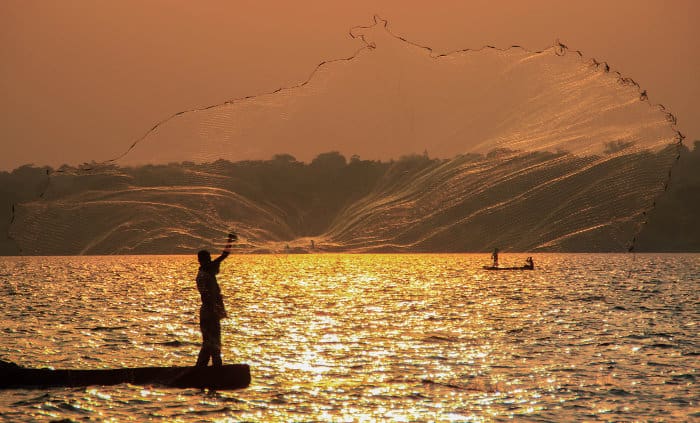
Those who are new to the wonders of Africa may be asking, what is Lake Victoria? Or, at least, what is interesting about it? This Lake Victoria guide is designed to answer these questions, and more.
The largest lake in Africa – Lake Victoria size
With a surface area of some 69,484 square kilometers, Victoria is the largest of Africa’s Great Lakes. In fact, it’s one of the largest freshwater lakes on Earth, second only to Lake Superior in North America.
The Lake’s vast, winding shoreline is over 3,000 kilometers in length and lies within the borders of three East African countries. Namely, Tanzania, Uganda, and Kenya.
Near enough half of the lake lies in Tanzania, with a slightly smaller portion lying across the border to the north in Uganda. The remainder of the Lake, around 6%, lies in Kenya.
How deep is Lake Victoria?

Lake Victoria’s average depth is around 40 meters, but the deepest point reaches down to 84 meters. This may sound deep, but Lake Victoria is actually considered a particularly shallow lake.
Its waters fill a shallow depression at the heart of the Equatorial Plateau rather than a deep crack in the Earth. For scale, it’s worth noting that the deepest lake in Africa, Lake Tanganyika, reaches an astonishing depth of 1470 meters.
How old is Lake Victoria?
Lake Victoria is around 400,000 years old, which, in lake years, is not terribly old at all. But it’s been through a lot in that time. Geological evidence suggests that it’s dried up at least three times in its lifetime.
Around 17,000 years ago, the lake dried up entirely and didn’t return to its former glory until more than 2,500 years later. The water has remained ever since.
Lake Victoria’s fish
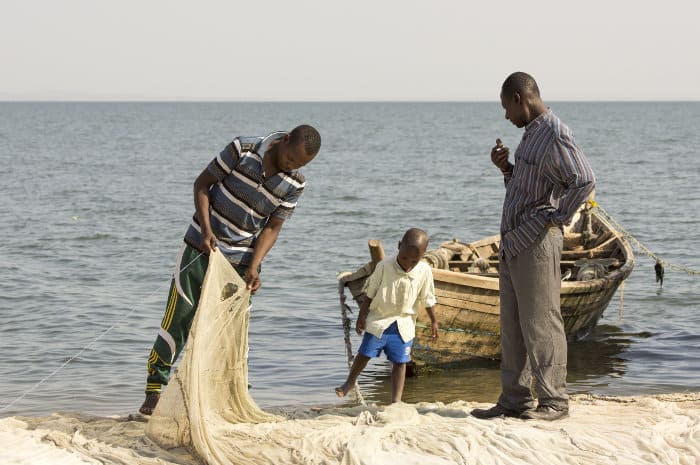
Lake Victoria was once home to over 500 species of fish. That’s more species than in any other lake on Earth, save Lake Malawi.
But European settlers brought with them a hunger for bigger fish, and soon introduced some invasive species. The effects were incredibly disruptive for the ecosystem. Over 200 of the original species died out, leaving some deeper parts of the lake ridden with algae and detritus.
Despite this unfortunate disruption, around 200 species of fish can be found throughout the lake today. And it is still a renowned fishing area among locals and visitors alike.
Top Lake Victoria Travel Destinations
While Lake Victoria isn’t exactly a tourism hotspot, it is home to some fantastic travel destinations. Many of which show off the wonders of wild Africa and whisk travelers far from the beaten track.
Here are some of the best places to visit in and around Lake Victoria.
1. Ssese Islands
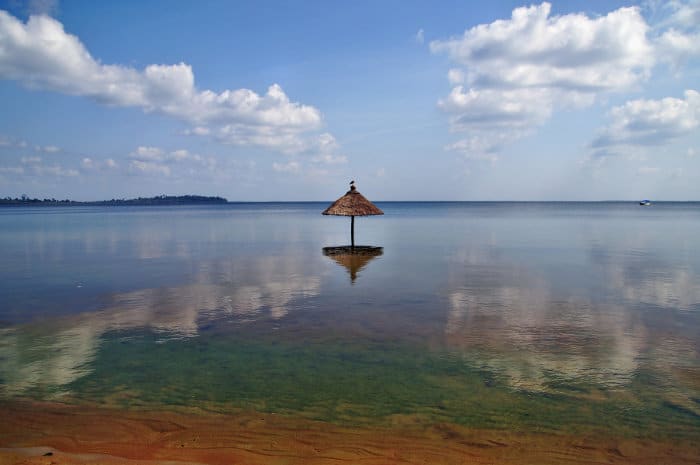
An archipelago of 84 islands in the Ugandan part of the Lake, the Ssese islands offer a laid-back tropical vibe. A trip here is best suited to those who enjoy life in the slow lane.
The primary pasttime for visitors is to kick back on the stunning white sand beaches and admire the scenic natural surroundings. But if you’re keen for something a bit more energetic, there’s usually a party vibe along Kalangala Bay.
Unfortunately, as inviting as the lake may look, swimming in it is not advised. There are risks associated with bilharzia and some dangerous water-dwelling wild animals. While diseases incurred from the water are rare, visitors to the lake are recommended to avoid contact with its water where possible.
The largest and most-frequented of the islands is Buggala Island. It’s just a short ferry ride from the Ugandan mainland and hosts a range of inviting beach resorts and hotels. Residents of nearby Kampala can often be found here, enjoying a weekend break away from the city.
2. Ngamba Island Chimpanzee Sanctuary
A little closer to the Ugandan capital, just northeast of the Ssese Islands, lies Ngamba Island. It’s surrounded by the splendor of the Lake, but a beautiful setting is far from all Ngamba has to offer.
The entire island is a chimpanzee sanctuary, home to 49 orphaned chimps. Each one rescued from all around the region and brought here to be cared for and given refuge.
Visitors to the island can choose between day trips and overnight stays. In either case, you’ll get to experience close encounters with these great apes. Guests can also embark on fishing expeditions and stunning sunset cruises.
For those who are interested in helping the cause and gaining some unique experience, medium-term volunteer programs are offered.
3. Rubondo Island National Park
Situated in the southwestern corner of the lake, just off the Tanzanian mainland, Rubondo Island National Park is the largest of its kind in Africa. It’s an island national park, comprised of Rubondo Island itself and several smaller, surrounding islets.
The park is home to an impressive range of animal life, including giraffe, elephants, hippos, crocodiles, sitatunga, and chimpanzees to name a few. Sightings of these animals aren’t as common here as in Africa’s best safari parks, but many of them are still spotted regularly.
The park is also renowned for its incredible birdlife and world-class fishing, with a strict catch-and-release policy.
The islands attract a handful of intrepid travelers each year, with several accommodation options on offer. It’s an unmistakably adventurous getaway that flaunts the true spirit of wild Africa.
4. Speke Bay
There are some truly stunning places to visit in Tanzania’s portion of Lake Victoria. At Speke Bay, life seems to have continued the way it has done for many, many years (with a few incongruous reminders of the 21st century).
Visitors to Speke Bay can join local fishermen in a day of fishing on the lake, using traditional methods and listening to the fishing songs of old – about home, about fish, about life. Birdwatching is a popular activity here, as is relaxing by the lake, enjoying the tranquility.
The sight of women toiling in the fields will remind you that even today, life can indeed be peaceful.
5. Lukuba Island
Venturing even further across the shores of the lake, you might come across Lukuba Island, where monitor lizards sun themselves on giant granite boulders and great cormorants swoop and dive at the water’s surface.
Boat trips from this island are a delight – especially for bird watchers, who can spend many hours spotting different species. Lukuba Island Lodge offers accommodation for those who wish to stay overnight.
6. Kisumu
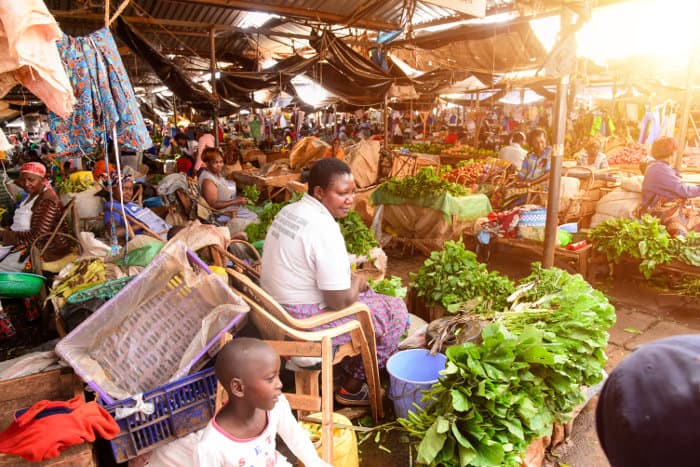
The city of Kisumu is the largest Kenyan city on Lake Victoria’s shores. Originally founded as a market town, the city is still home to a number of bustling markets. Kisumu Main Market is a great place to start if you’re looking for a piece of the action.
Despite being the third-largest city in Kenya, Kisumu retains a laid-back atmosphere. Check out Oasis to experience the sights and sounds of live Lingala music.
And pay a visit to Kisumu Museum to discover some cultural and historical context to the area. Its most impressive exhibition is a realistic recreation of a traditional Luo homestead.
When the sun is hanging low in the sky, head to Hippo Point, famous for its spectacular lakeside sunsets (as well as the occasional hippo sighting).
7. Mwanza
The major city on Tanzania’s Lake Victoria shores is Mwanza, the second-largest city in the country. It overlooks Lake Victoria, yet is a far cry from the slow-paced, rural villages around the Speke Bay area, and the pervading tranquillity of the lake’s islands. Smallholder agriculture is thriving, as is fishing in the lake.
Mwanza airport is located only 10 kilometers from the city center. This makes Mwanza the perfect stopover point for travelers who have visited the more northern shores of Lake Victoria, and need to return to Arusha or Dar es Salaam. Or even connect to a flight to Zanzibar for a beach holiday.
Mwanza is also a good jumping-off point for those visiting Rubondo Island National Park or Speke Bay.
8. Serengeti National Park
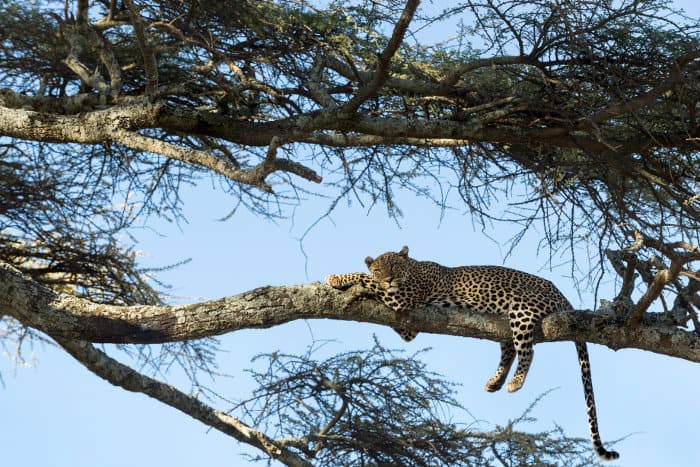
Although none of its borders touch Lake Victoria’s shores, it would be a crime to ignore the Serengeti National Park while discussing northern Tanzania. The park’s extremities come as close as 1 kilometer to the lake, and it’s just a short drive from Mwanza or Speke Bay.
One of the best-known wildlife sanctuaries and finest safari destinations in the world, the park hosts the great migration of wildebeest and zebra. A wildlife spectacle that is often considered to be one of the most impressive on Earth.
A visit to the park must be well planned to ensure the best experience. But it’s certainly a worthwhile excursion for those who have the time and resources.
9. Rock art on Mfangano Island
Mfangano Island is located just within the Kenyan border, near the country’s mainland shores. It’s home to a pair of ancient rock art sites, with paintings that date back up to 4,000 years ago.
These sites, Mawanga Cave and Kwitone can be explored and admired by visitors to the island. A moderate entry fee is charged, with the proceeds used to support a local orphanage.
If you’re looking to stay on the island overnight, Mfangano Island Camp offers luxury lakeside accommodation and a tranquil atmosphere.
Visiting Lake Victoria
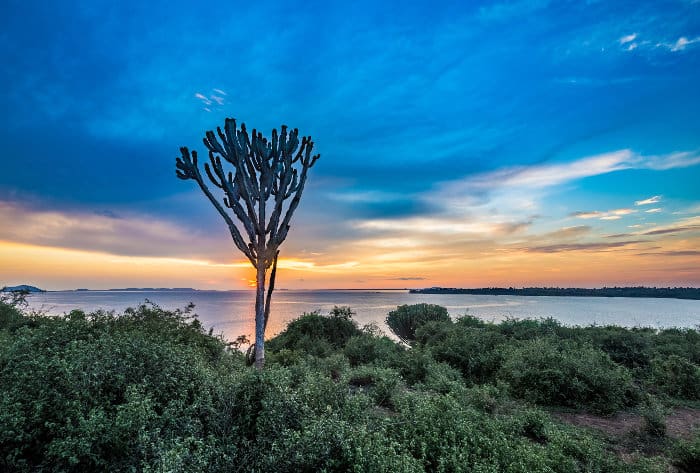
Lake Victoria is a true natural wonder. It’s a space where travelers can enjoy a more off-the-beaten-track experience than the safaris for which the region is known. You can escape the complexities of modern life and find unique experiences at every turn.
So next time you think of East Africa, don’t just think about spotting game. Think about the long, winding history of this mighty lake and its inhabitants. And, consider embarking on an adventure that takes you beyond the clichéd.
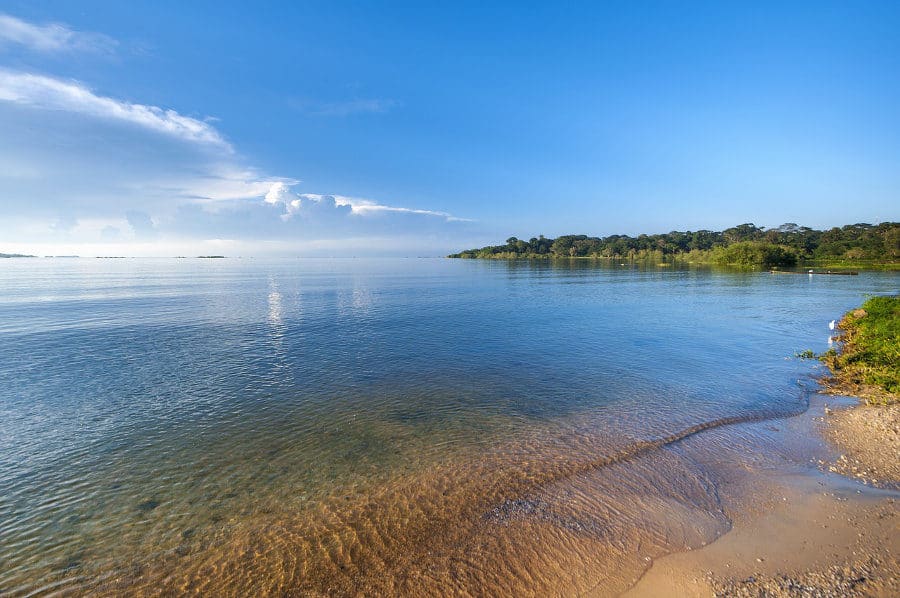
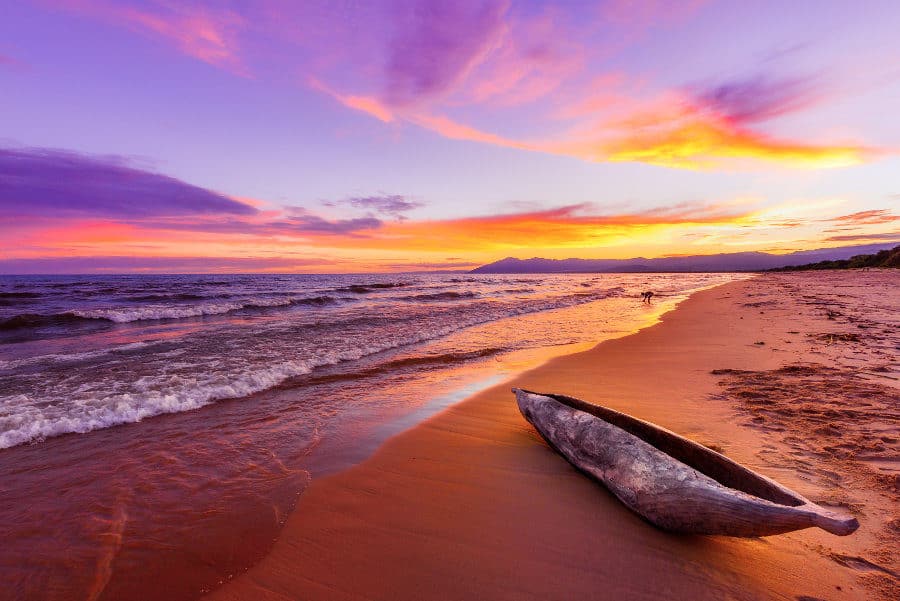

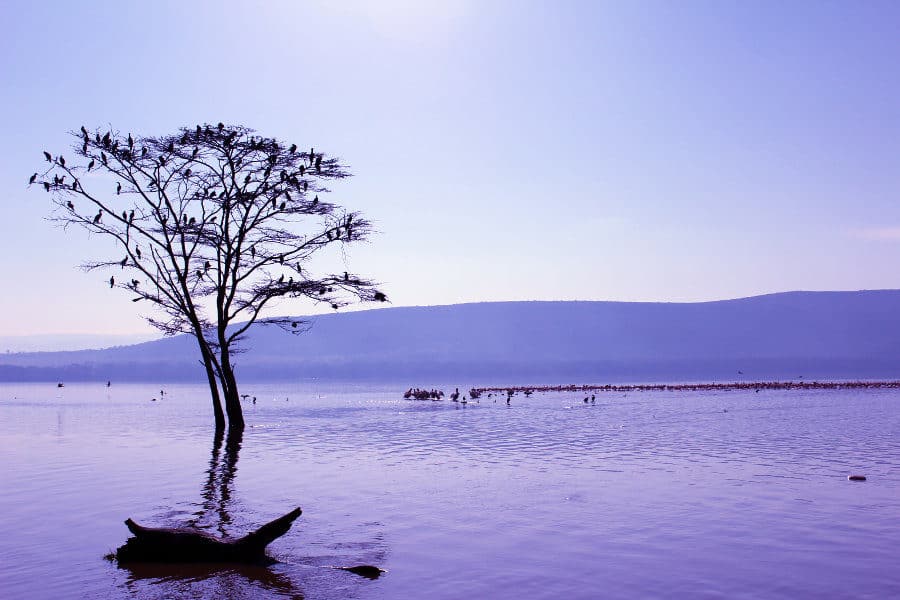
This is a great article about the wonders of L. Victoria and its surroundings. But I’m surprised that the writer did not find any of the cities on the shores of the Ugandan part of the lake (Jinja, Kampala, Entebbe, Masaka) exciting at all or to be worthy of a visit by tourists. Also, it’s worth verifying that Kisumu, not Kampala is the biggest city on the shores of L. Victoria.
Hi Sam,
Thanks so much for your constructive feedback, much appreciated. 🙂
Sure, those areas of the lake are also worthy of a visit. While it’s impossible to list everything, we might include them in a future update.
Regarding Kisumu, what the writer meant is that it is the biggest “Kenyan” city on the shores of Lake Victoria.
I just made some adjustments, thanks again.
Michaël